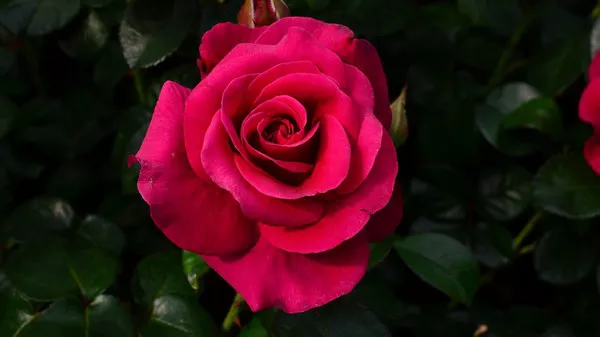Throughout history, flowers have held symbolic meanings and cultural significance, often associated with luck, prosperity, and positive energies. People across different cultures have embraced the idea of “lucky flowers,” believing in their ability to bring good fortune and blessings into their lives. In this article, we will delve into some of the luckiest flowers from various traditions and explore the fascinating world of flower symbolism.
The Cultural Significance of Lucky Flowers
The association of flowers with luck and good fortune dates back centuries, with various cultures attributing positive qualities to specific blooms. From ancient civilizations to modern times, the symbolism of lucky flowers has been deeply ingrained in folklore, myths, and religious beliefs.
Lucky flowers hold universal appeal as they transcend geographical boundaries and cultural differences. The belief in the auspicious properties of certain blooms has spread across continents and become a part of diverse traditions and celebrations worldwide.
1. The Rose: A Symbol of Luck and Love
The rose is an iconic flower celebrated for its beauty and fragrance. In addition to its association with love and romance, the rose is also considered a symbol of luck in various cultures. The belief in the luck-bringing properties of roses has led to their use in wedding ceremonies, anniversaries, and other joyous occasions.
Different colored roses convey varying meanings and symbolism. Red roses are often associated with passionate love, while pink roses symbolize admiration and gratitude. Yellow roses are considered lucky in matters of friendship, and white roses represent purity and new beginnings.
2. The Symbolic Powers of the Lotus
The lotus is a sacred flower in many cultures, representing purity, enlightenment, and spiritual awakening. Its emergence from muddy waters to bloom into a pristine flower has made it a powerful symbol of transformation and growth. The lotus is often associated with luck and blessings in various Asian traditions.
In Hinduism and Buddhism, the lotus holds significant spiritual meaning. It is associated with deities and is often depicted in religious art and architecture. The lotus is also considered a symbol of prosperity and abundance, further enhancing its lucky status.
3. The Chrysanthemum: A Japanese Emblem of Good Fortune
The chrysanthemum, known as “Kiku” in Japanese, holds a special place in the hearts of the Japanese people. It is the national flower of Japan and is revered for its beauty and elegance. The chrysanthemum is a symbol of good fortune, longevity, and rejuvenation.
The chrysanthemum has been associated with the Japanese imperial family for centuries. It serves as the Emperor’s seal and represents the authority and dignity of the monarch. In Japan, the chrysanthemum is often seen as a symbol of prosperity and good luck for the nation.
4. The Peony: A Chinese Emblem of Prosperity
In Chinese culture, the peony is known as the “King of Flowers” and holds great significance. It is a symbol of prosperity, wealth, and honor. The peony’s lush and opulent blooms have led to its association with good fortune and abundance.
The peony is highly regarded in Feng Shui, the ancient Chinese practice of harmonizing energy in the environment. It is believed to attract positive energies and good luck, making it a popular choice for home decor and gardens.
5. Orchids: Symbols of Fertility and Good Fortune
Orchids are renowned for their exquisite beauty and unique appearance. They are regarded as symbols of luxury, elegance, and rare beauty. Orchids are associated with good fortune, fertility, and harmonious relationships in various cultures.
In ancient Greece, orchids were believed to have the power to influence gender and fertility. In Chinese culture, the orchid is associated with prosperity and good luck, while in Aztec civilization, the flower was linked to strength and virility.
6. Daffodils: Harbingers of Good Luck
Daffodils are celebrated for their bright yellow blooms, often appearing as harbingers of spring. They are regarded as symbols of new beginnings and fresh starts, bringing good luck and positive energies.
In Wales, the daffodil is considered a lucky flower and holds special significance on St. David’s Day, the national day of Wales. People wear daffodils to commemorate the occasion and celebrate Welsh culture and heritage.
7. Sunflowers: Symbolizing Happiness and Prosperity
Sunflowers are known for their cheerful and radiant appearance, always turning towards the sun. They are seen as symbols of happiness, optimism, and abundance, making them lucky flowers associated with positive energies.
In Native American cultures, sunflowers have spiritual significance and are associated with harvest and fertility. The flower’s golden hue and resemblance to the sun make it a symbol of light and life.
Conclusion
Lucky flowers hold a special place in human hearts, with their symbolism spanning cultures and generations. From the romance of roses to the auspicious lotus and chrysanthemum, these blooms have come to represent luck, prosperity, and positive energies. Understanding the cultural significance of lucky flowers allows us to appreciate the beauty of nature and its rich tapestry of meanings across different traditions. Whether we embrace these beliefs or simply admire the beauty of these fortunate blooms, lucky flowers continue to captivate our hearts and inspire us with their symbolic allure.


